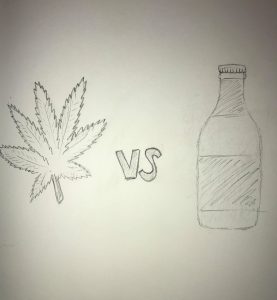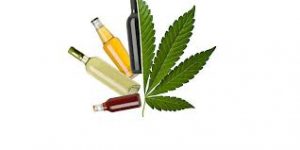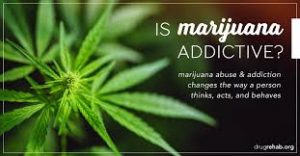 Due to its classification as a schedule one drug, not enough research has been done on cannabis. Although we don’t understand everything about cannabis, we do know that the endocannabinoid system is present across the human body, not just in the brain. This is one reason why medical marijuana use can aid in pain control, over/under eating, and cancer.
Due to its classification as a schedule one drug, not enough research has been done on cannabis. Although we don’t understand everything about cannabis, we do know that the endocannabinoid system is present across the human body, not just in the brain. This is one reason why medical marijuana use can aid in pain control, over/under eating, and cancer.
As a current hot topic in mainstream media, the legalization of medical and recreational marijuana can be compared to the legality of alcoholism. In the case of cannabis, we understand that there are positive health benefits to the drug. In contrast, alcohol possesses no medically beneficial properties and it purely legal for recreational purposes. I wanted to further understand the comparisons between marijuana use and alcohol use. Even former President Barack Obama has shared his opinion regarding marijuana in multiple interviews, stating, “I don’t think it is more dangerous than alcohol.”

To compare marijuana and alcohol, cases of overdose and life-threatening side-effects should be considered first. The CDC has stated that approximately 88,000 alcohol-related deaths occur every year, many having to do with alcohol poisoning/overdose. In contrast, it has been determined by previous research that a fatal dose of marijuana is between 15-70 grams, meaning that an individual would have to smoke between 238-1,113 joints over the span of 24 hours in order to overdose. This makes the annual number of marijuana-related deaths around zero. When it comes to automobile-related dangers, driving under the influence of marijuana is still safer than driving drunk. Although it is still unsafe to drive while high, marijuana increases the likelihood of car accidents by 83% while the consumption of alcohol increases the odds by 2,200%. Likewise, both alcohol and marijuana can lead to addiction or dependence. Since both drugs utilize the reward pathway in the brain, releasing ample amounts of dopamine, both can be addictive and affect an individual’s neurochemistry when used chronically–with alcohol use, this is called alcoholism, and in marijuana use, this is labeled as marijuana use disorder. Although it is common among young consumers and popular media to believe that marijuana is non-addictive, this is a false assumption. The National Institute of Health found that in 2016, nearly 6 million people had experienced marijuana use disorder within the past year–approximately 2.5% of adults. The study also reported that 6.3% of individuals had, at some point in their lives, met the diagnostic criteria for marijuana use disorder.
Most commonly, cannabis binds to the CB1 receptors in the brain. Once bound, endocannabinoid activity usually leads to cell apoptosis or cell death. Previous research studies have identified that this action is why marijuana aids in cases of cancer, attacking the cancer cells. We understand that for unknown reasons, cancer cells possess more CB1 receptors, allowing for more binding, and therefore more cell death than other cells with less CB1 receptors. In regards to the reward pathway, the THC in marijuana binds to the nucleus accumbens, activating the pathway. Likewise, alcohol also leads to the activation of the reward pathway, but in a different way. Alcohol promotes GABA, a common inhibitory neurotransmitter, leading to the activation of the ventral tegmental area and release of dopamine. Although some researchers contemplate the ability of alcohol to activate endogenous cannabinoid pathways, the way in which we currently understand alcohol and marijuana to act in the body remains incredibly different–even if they both lead to the activation of the reward pathway. For these reasons, more research needs to be done to compare the two, especially when considering the legalization of both drugs.
Little research has been done to understand the long-term effects of marijuana use. Before it can be determined whether alcohol or marijuana is worse for humans to consume, more research needs to be done. Although our current understanding of both drugs tends to promote the safety of marijuana over alcohol, too many pieces of the story are still unknown. Likewise, the stigma against marijuana use continues to affect our current understanding of the drug.
https://pubs.niaaa.nih.gov/publications/arh313/185-195.htm
https://www.psychologytoday.com/us/blog/your-brain-food/201012/alcohol-vs-marijuana-in-the-brain
https://www.nih.gov/news-events/news-releases/marijuana-use-disorder-common-often-untreated